What Hi-Fi? Verdict
The G2 is truly a thing of beauty: while clearly targeted at the no-expense-spared crowd, it will tempt many to step up to it from the C2, despite the high price
Pros
- +
LG’s brightest OLED pictures yet
- +
Typically deep blacks, rich colours
- +
Improved Gallery design
Cons
- -
Substantially pricier than the C2
- -
Not as bright as premium LCD TVs
- -
No stand in box
Why you can trust What Hi-Fi?
While not a change that all buyers appreciated, LG decided in 2021 that its premium G-series OLED TVs needed more than just a fancier design to make them a compelling step-up alternative to the brand’s all-conquering C series.
So 2021’s G1 benefited from a new, higher brightness ‘Evo’ panel that the C1 did not get – and instantly did a much better job of justifying its higher price.
LG has continued this approach for 2022: while the new C2 does now have an Evo panel, the G2 boasts a new heat sink element that allows it to be driven even harder – or brighter, in other words – than its predecessor.
In short, if you want LG’s best 4K OLED TV in 2022, this should be it.
Price
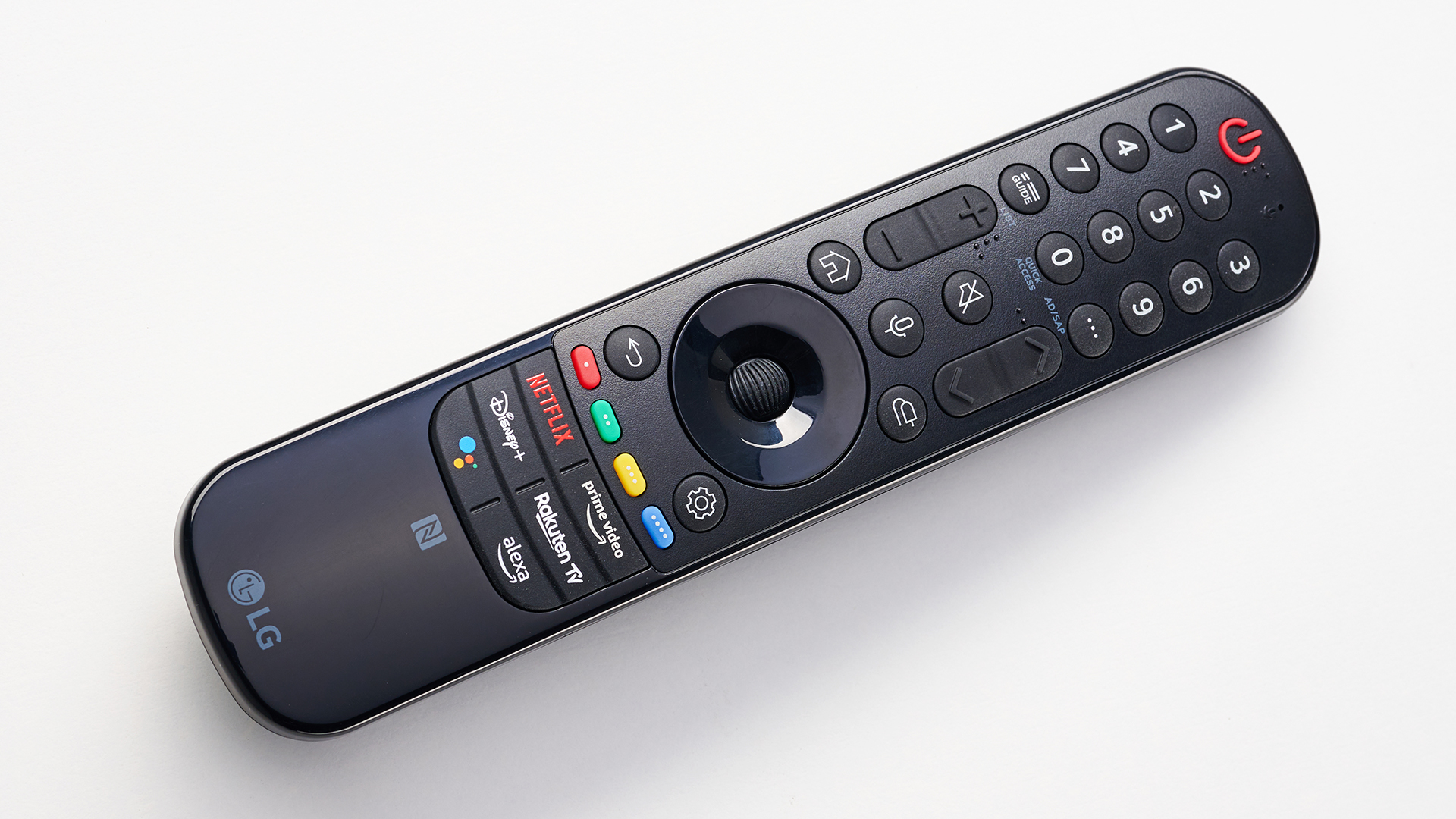
The 65-inch G2 (OLED65G2) that we’re reviewing here is priced at launch at £3300 / $3200 (around AU$5750). That makes it £300 / $200 (around AU$450) more expensive than 2021’s G1 was at launch.
Perhaps more importantly, while the C2 (£2700 / $2500 / around AU$4700) is also more expensive (in the UK at least) than its predecessor was at launch, the price gap between it and the G2 is still larger than before. You’ll now have to find an extra £600 / $700 (around AU$1050) if you want to step up to the G2’s extra brightness and ‘Gallery’ design, plus extra for a stand if you’re not planning to wall-mount.
How does that compare to the prices of other premium 2022 TVs? Unfortunately, the likes of Sony, Panasonic and Philips are yet to reveal the pricing of their new models but, at $3000 (UK and Australian pricing is yet to be revealed) the 65-inch version of Samsung’s groundbreaking new S95B QD-OLED TV actually undercuts the G2. It will be fascinating to see how these two models compare once the S95B finally appears in reviewable form.
The latest hi-fi, home cinema and tech news, reviews, buying advice and deals, direct to your inbox.
Design
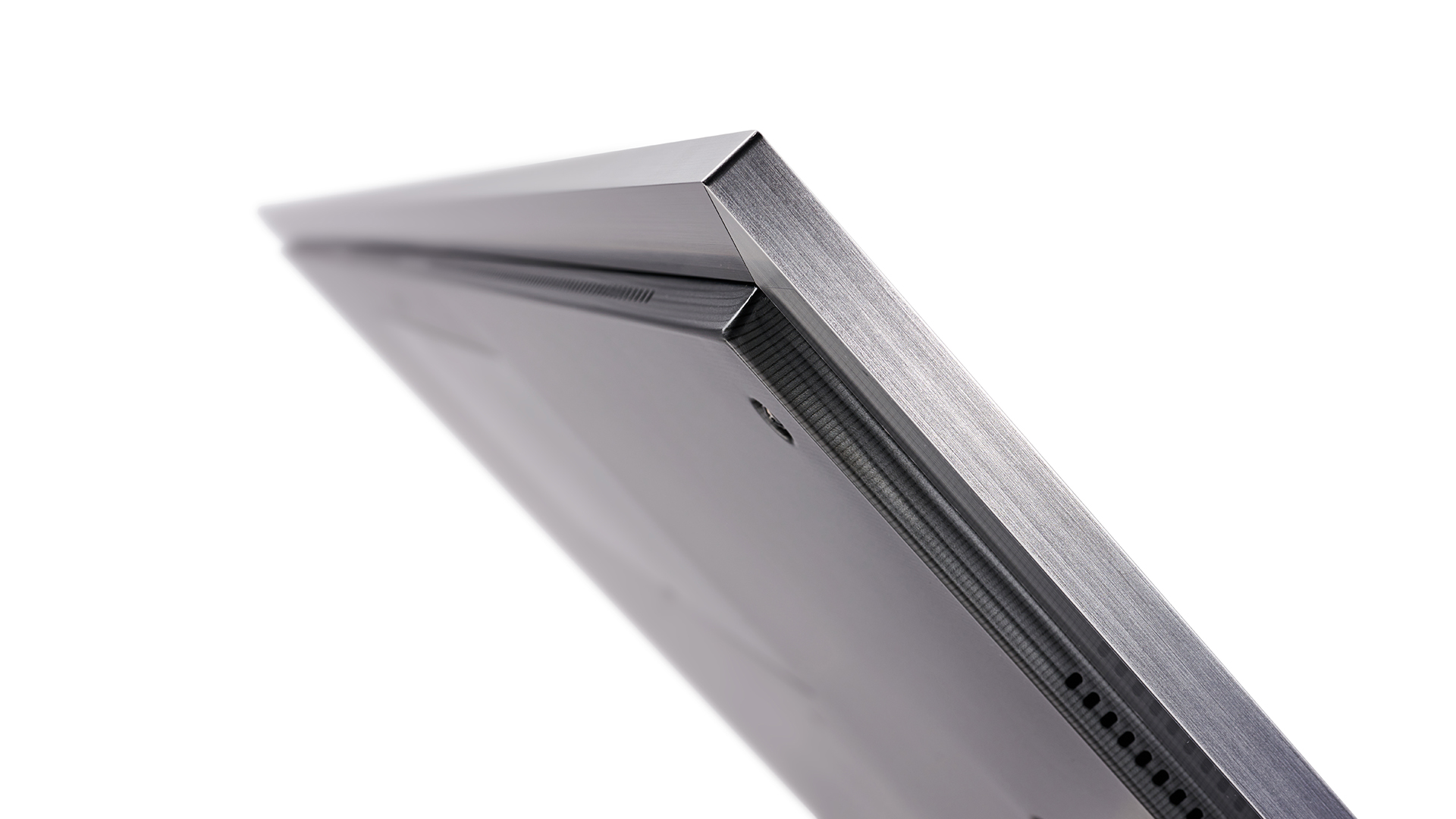
Although the OLED65G2 is still described by LG as sporting a ‘Gallery’ design, optimised for wall mounting, it actually looks quite different to the previous couple of G series generations. The previous slim, chamfered dark sides have been replaced by a more monolithic-looking two-tier design that features a high quality metal ‘wrap’ around the sides of the front tier. It looks more premium than the old design, while still being super thin and able to be hung flush to your wall using a provided wall mount.
If you’d rather set the OLED65G2 up on a piece of furniture, you can buy a stand for it. The official support is a high quality item this year, too, that looks very similar to the one supplied with the C2 OLEDs. Gone are the spindly, awkwardly wide-set legs that formed last year’s G1 option. Bear in mind, though, that if you want to buy the official stand for the OLED65G2, you’ll likely have to fork out a pretty penny (pricing is currently TBC). Those looking to save some money might want to look for a third-party alternative that utilises the G2’s standard VESA points.
Attaching the OLED65G2 to its official optional stand for this review reminded us that LG’s OLED TVs for this year are impressively lighter than previously. This new lightness also, of course, makes the G2 a less daunting/scary wall hanging option.
You control the OLED65G2 with one of LG’s classic magic remotes, which let you simply point the remote at the right part of the screen to select an onscreen option.
Features
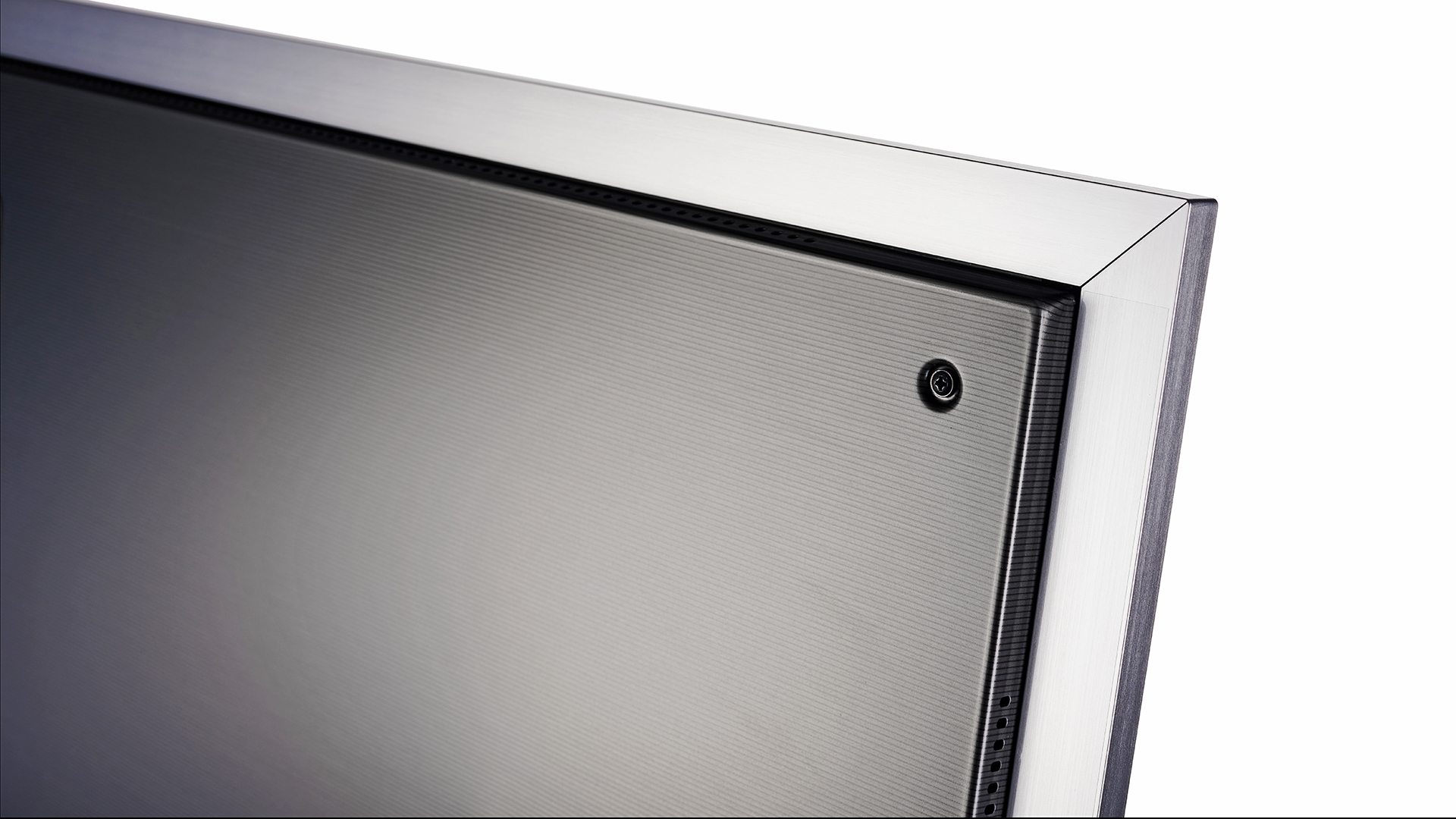
The big story with the OLED65G2 is its addition of a new heat sink layer to one of LG’s high-brightness Evo OLED panels. Being able to dissipate more heat means the TV can be run as much as 15 per cent more brightly than last year’s G1 (and this year’s C2, given that they don’t get the heat sink) without increasing its susceptibility to screen burn.
An increase of that magnitude would see the OLED65G2 pushing against the 1000 nits figure often considered a key value when it comes to delivering high dynamic range (HDR) with conviction.
LG has delivered another annual progression to its processing system for 2022, too. Among the improvements promised with the Alpha 9 Generation 5 processor are better upscaling of HD and SD content to 4K, thanks to improvements in LG’s AI-based image analysis and a new upscaling ‘flow’ that actually removes a processing step to produce cleaner results.
The Dynamic Tone Mapping system LG uses to map the light range of HDR sources to the screen’s capabilities has been improved, too. Now it can figure out both the genre of content you’re watching and whether a particular scene is taking place at night or in daylight, giving the TV more image ‘shorthand’ it can use when trying to optimise its presentation of an HDR image in real time.
Likely even more useful is the ability of the new processing system to divide the picture into more than 5000 blocks for analysis, compared with less than 600 in 2021. This should help the TV apply much more localised image tweaks than its predecessor could, resulting, we’d hope, in much more refined looking images.
Connected to this much finer level of image control is improved AI Object/Background recognition. This figures out which parts of the image are background elements, and the relative hierarchy of all the separate objects within an image, before carefully adjusting everything to add subtle emphasis to an image’s most important aspects. The idea being to make images look more lifelike – or, at least, more in keeping with the way our eyes interpret the real world.
It should be said that the step-down C2 gets the same Alpha 9 Gen 5 LG processing system that the OLED65G2 gets; the only real difference in picture terms between the two OLEDs is the G2’s heat sink. However, a key element of the Alpha 9 engine is always to optimise pictures for each particular screen it’s working with. So with the OLED65G2 the processor should be doing its best to take maximum advantage of the panel’s extra brightness potential.
Not that the Alpha 9 Gen 5 processor is only interested in improving picture quality. It also introduces a new audio feature whereby the TV can upmix limited-channel sources to 7.1.2 channels – compared with the 5.1.2 channels possible with 2021’s top-end LG models.
Again, this new upmixing capability is available on the new C2 OLEDs as well as the OLED65G2. The OLED65G2, though, backs it up with a 60W, 4.2-channel speaker configuration, versus a 40W, 2.2 set-up on the C2s.

Screen size 65 inches (also available in 55in, 77in, 83in, 97in)
Type OLED
Resolution 4K
HDR formats HDR10, HLG, Dolby Vision (inc. Dolby Vision IQ with Precision Detail)
Operating system webOS 22
HDMI inputs x4
HDMI 2.1 Yes, 48Gbps, all four inputs
Gaming features 4K/120, VRR, ALLM, HGiG, Dolby Vision game mode
Input lag 9.4ms
ARC/eARC eARC
Optical output Yes
Dimensions (hwd, without stand) 82 x 144 x 2.4cm
LG OLEDs have become firm favourites with gamers since the ground-breaking 9 series back in 2019. The OLED65G2 builds on this popularity thanks to an upping of the data rate of its four HDMI 2.1 sockets from 40Gbps to 48Gbps. Not that it currently makes any practical difference – 4K/120Hz and VRR (including the AMD Freesync Premium and Nvidia G-Sync systems) were supported last year, so their presence here isn’t new. The Game Optimiser menu, which brings together key gaming-related features and information into a single easy to digest and control menu – has been lightly tweaked though.
Input lag with 1080p/60Hz feeds in the set’s Game preset is just 9.4ms, making it next to impossible to blame the TV for any of your embarrassing Call Of Duty deaths.
Xbox Series X fans will be pleased to see the OLED65G2 continuing LG’s support for Dolby Vision HDR at 4K/120Hz – something that precious few other TVs can manage, even models that support Dolby Vision in every other format.
While we’re on the subject of Dolby Vision, the OLED65G2’s immense processing power has made it the first TV in the world able to support Dolby Vision IQ with Precision Detail. This new Dolby feature apparently delivers even more refinement and subtle detail enhancement to Dolby Vision IQ’s system for automatically adjusting the way Dolby Vision HDR sources are presented based on ambient room conditions.
The Dolby Vision support is joined, of course, by support for the more standard HDR10 and HLG HDR systems. As always with LG, the HDR support doesn’t include HDR10+. This is a pity when brands such as Philips and Panasonic are now supporting both HDR10+ and Dolby Vision on their latest TVs. Though if you did have to pick between HDR10+ and Dolby Vision, there is certainly much more content out there mastered in Dolby Vision than HDR10+.
The OLED65G2 gives us our first look at the latest version of LG’s webOS smart interface. Now called webOS 22, reflecting the year of its ‘birth’, there are four main new features to mention.
The first is support for multiple profiles, so different members of your household can log in and get access to their own dedicated customised home screen and user profile.
A new Multi View feature enables you to watch different sources on screen simultaneously. This isn’t the first time we’ve seen such a feature, of course, but the flexibility and viewing options it supports are impressive.
The latest webOS system also introduces new Family Settings designed to stop kids – or, let’s face it, adults – from ruining their health by watching too much TV. These include a Usage Limiter, a Screen Time monitor, plus Eye Care and Volume Limiter options.
Finally, a new Always Ready feature introduces more flexibility over what the TV does while you’re not watching it in earnest. You can, for instance, choose to have the time and current weather report show on screen. Or you could choose to play a digital artwork on the screen while the TV remains ‘conscious’ enough to react to voice commands. You can even have it stream music like a smart speaker – kind of like an Amazon Alexa with a 65-inch screen and a 7.1.2 sound system.
Picture
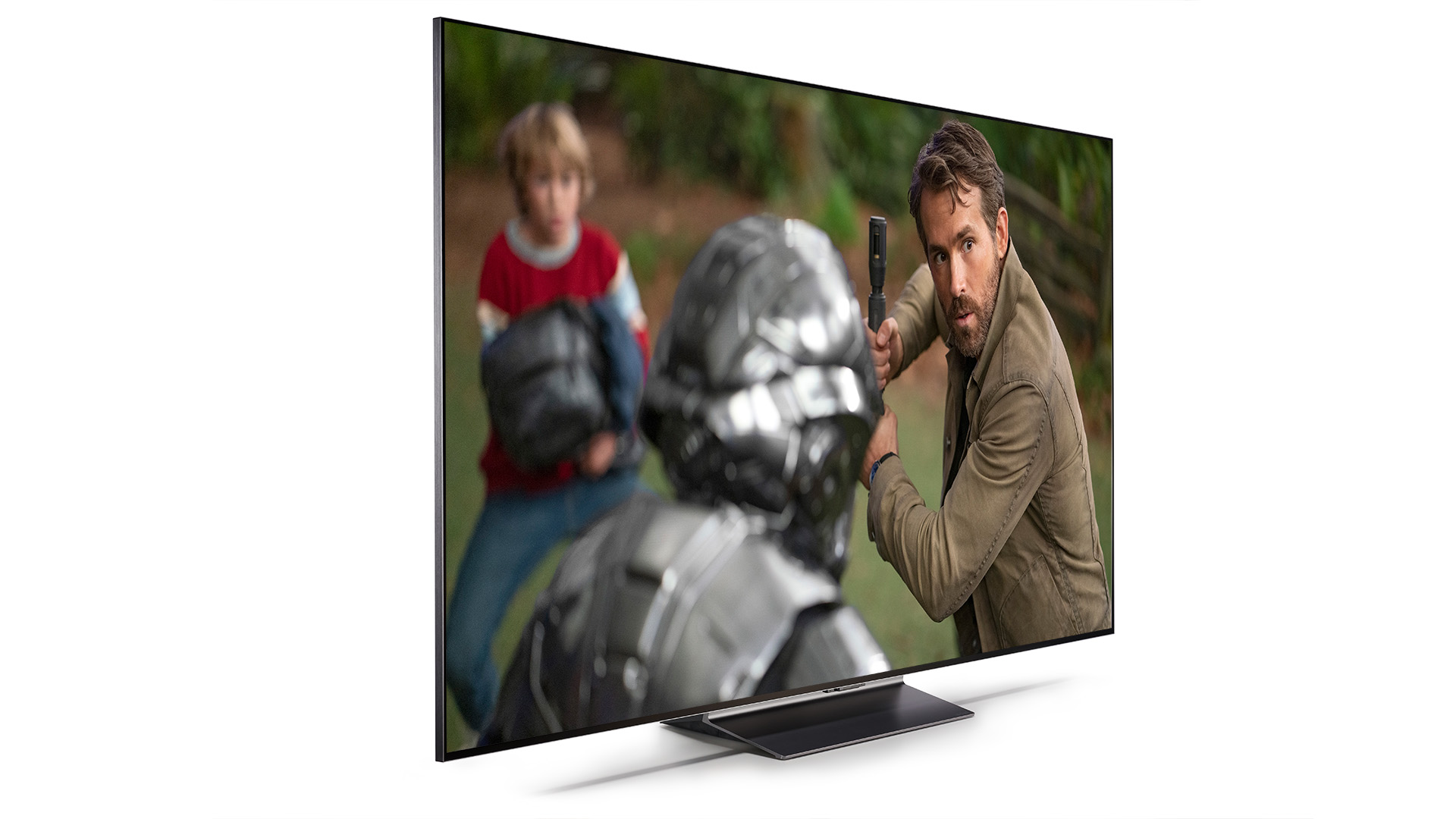
We’ve now had the chance to see an OLED65G2 running against one of LG’s C2 models on two separate occasions – once in an LG demonstration using presumably pre-production screens, and once in the comfort of our own test rooms with final production line samples. Our full C2 review is on the way but, suffice to say, the G2 is the better performer.
First, the OLED65G2’s additional heat sink really does lead to a noticeable and welcome brightness boost over the C2 – despite the C2’s pictures themselves delivering a palpable brightness enhancement over the pictures of 2021’s C1. Second, unlike the early demo units, the finished OLED65G2 delivers its brightness enhancements without washing out the colours.
Going back to the brightness lift, we’re very happy to see that you can appreciate its benefits in both of the ways we’d hoped you would. So on the one hand, the very brightest ‘peaks’ of an HDR image have more purity, brightness and ‘gleam’ than they do on the C2. We’re talking here about such things as sun reflecting off metal; shots of the moon or street lights against a black sky; stars, raindrops and so on. Also, though, the overall brightness of light, full-screen HDR content is increased over the C2, making such pictures look more realistic and ‘HDR’.
Both of these brightness advantages make images look richer and more expressive, which in turn enhances their sense of depth/three-dimensional space. The benefits of the extra brightness aren’t just visible from time to time, either; you can feel them in almost every frame of an HDR source, be it a naturalistically shot daylight interior or a dramatically lit neon-drenched night-time exterior.
What’s more, since the extra brightness is delivered on the factory sample without fading colours, there’s actually also a boost to colour volume and vibrancy over the C2 and last year’s G1. To be clear, this applies across all of the OLED65G2’s picture presets, including the Cinema, Cinema Home and Filmmaker Mode options, and makes pictures look more authentic and realistic. In other words, there’s nothing forced about any of the OLED65G2’s brightness and colour enhancements.
It’s a relief, too, to find that the OLED65G2’s brightness boost doesn’t mess with the legendarily deep black tones LG OLED TVs have long been known for. They’re every bit as inky as they’ve ever been. What’s more, there seems to be slightly less noise in dark areas than we’ve previously seen with LG OLEDs, pointing to improvements in the handling of near-black picture details. This makes it easier, too, to appreciate the TV’s immaculate reproduction of shadow detail in dark picture areas.
As if all this wasn’t great news enough, LG also appears to have improved both its motion performance and upscaling of sub-4K sources for 2022. When it comes to motion, the default Natural setting generates substantially fewer unwanted side effects than it did last year. So much so that while motion processing will always be anathema to some movie enthusiasts, we can actually see many ‘regular punters’ choosing to leave it on. The less heavy duty Cinematic Movement option, meanwhile, also seems to deliver more consistent and less choppy results if you’re after a setting that just takes the edge off judder.
All of these many strengths and improvements don’t just make the OLED65G2 a fantastic performer with TV shows and movies. They also make it next-gen brilliant with the latest gaming graphics, getting even more impact, dynamism and clarity out of the 4K/120Hz, VRR and HDR splendour now available from PC graphics cards, the Xbox Series X and (VRR-aside) PS5. Gaming on the OLED65G2 is so much fun, in fact, that it’s hard to believe it’s legal.

We’re still not done with the good news, either. The OLED65G2’s upscaling improvements are fantastic, for example. Upscaled images look sharper, denser, more detailed and devoid of jaggies over curved or diagonal edges, and picture noise has now been almost completely removed. Even if you stick with the aggressively crisp default settings of the Standard preset.
The system being used to remove this noise can sometimes scrub a touch of grain out of grainy sources. However, the resulting image still feels fairly 4K-like, and appears without lag or blur. And honestly we’d rather sacrifice a smidge of source grain in return for not having to worry about exaggerated grain, double edging, a gauzy effect over the picture, or other common upscaling problems.
Add to the mix OLED’s natural advantage when it comes to viewing angles, and it’s pretty hard to find anything negative to say about the OLED65G2’s pictures.
As always we should point out that premium – really premium – LCD TVs can deliver significantly more brightness with full screen images and peak HDR highlights than even the OLED65G2 can. Though as well as being significantly brighter than most OLED TVs, the intense contrast achievable by the OLED65G2’s pixel-for-pixel lighting provides some pretty hefty compensation for any brightness limitation versus LCD TVs.
The Dolby Vision settings feel a touch dark compared with the others, to the point where it feels as if a little shadow detail occasionally gets crushed from the image, and we also see one or two black level fluctuations while watching Dolby Vision.
While the OLED65G2 typically handles its extra brightness pretty immaculately, every now and then some really extreme bright colours can flare out a fraction. But these moments are so rare and tend to be limited to such small areas of the picture that you likely won’t notice them unless you really know what you’re looking for.
Finally, while the OLED65G2’s brightness enhancements are unexpectedly consistent, they’re not, perhaps, dazzlingly extreme. Highlights and full-screen bright images look slightly punchier and more expressive than they do on the C2 rather than explosively punchier and more expressive (though the difference is much greater if you compare the G2 with last year’s C1). We’ll talk more about the implications of this in our verdict.
Sound
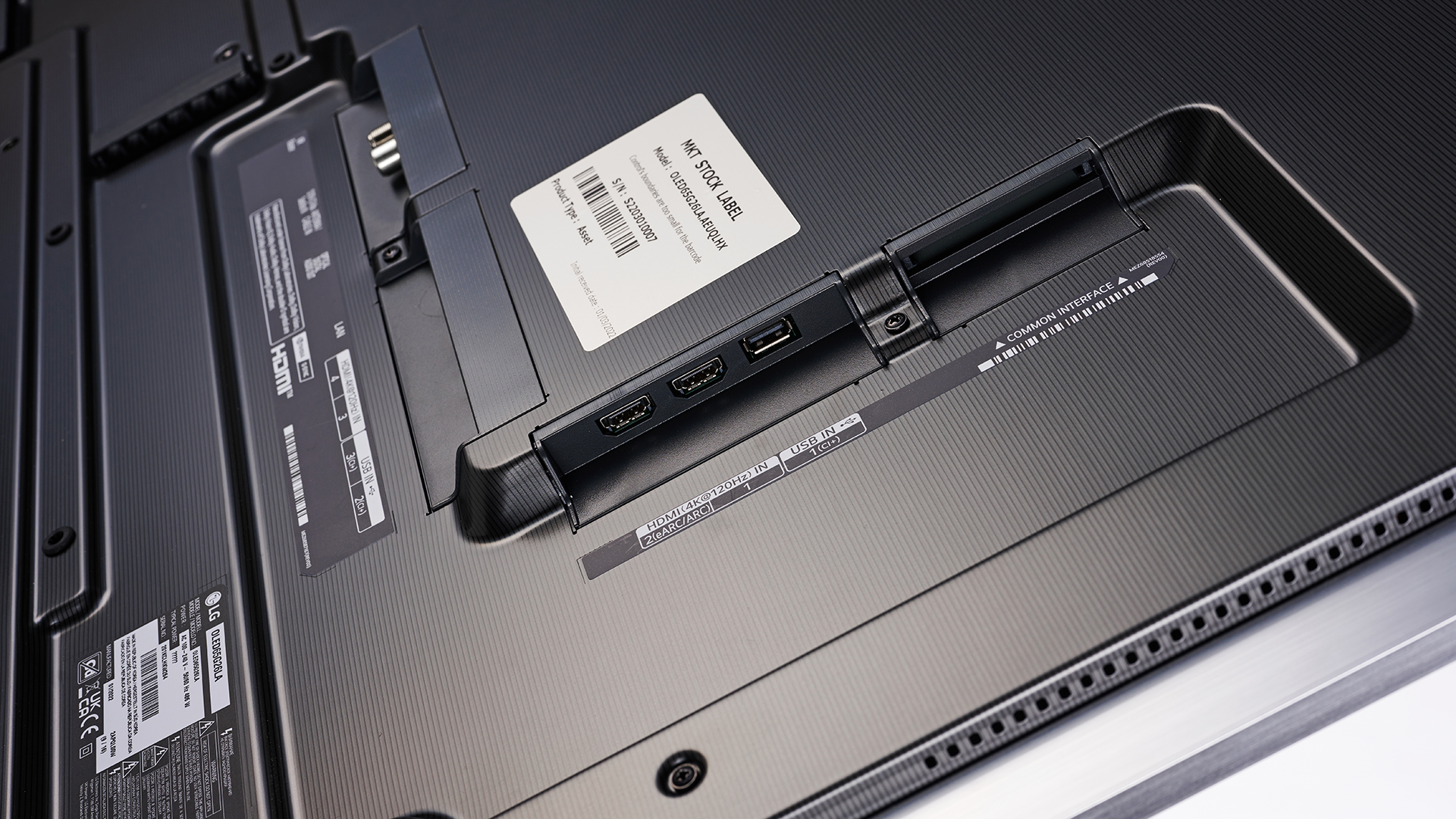
While the OLED65G2 isn’t quite a TV audio A-lister, it does at least show a positive direction of travel for LG’s OLED TV sound.
Particularly pleasing is how much more dynamic the sound appears when running in Dolby Atmos mode. LG’s TVs have had a habit for a while now of sounding strangely reined-in and lifeless with Dolby Atmos mixes, leaving us much preferring LG’s more powerful and dynamic AI Sound mode. On the OLED65G2, though, Dolby Atmos no longer sounds like the poor relation. It’s almost like someone has turned on a tap of extra power compared with last year’s G1 audio, enabling Dolby Atmos mixes to create a wider soundstage that contains clearer, more accurately positioned effects and which is underpinned by more potent mid range and bass.
Best of all, while it doesn’t quite have enough power and headroom to keep expanding all the way to the very top of a full-blooded action movie moment, the OLED65G2 does at least avoid actually sounding like it’s shrinking back when the going gets tough.
The new 7.1.2 upmixing feature is surprisingly interesting, too. Yes, to some extent it’s gimmicky to claim support for so many channels from a TV that only carries a 4.2 speaker set-up. You don't, for instance, get any real sense of sound coming from behind you or even to the sides of your listening position. The 7.1.2 conversion does, though, remix stereo or Pro-Logic sources into a soundstage that at least sounds more detailed and ‘steered’, without anything sounding like it’s obviously in the wrong place. As promised by the ‘.2’ part of the 7.1.2 upmixing spec, there’s even more than a hint of height to sources that have been remixed to 7.1.2 by the Alpha 9 Gen 5 chip. Which is actually a pretty clever result considering we’re talking about a TV here, rather than a soundbar.
The AI Sound system still has the edge over the Dolby Atmos mode when it comes to pure power and ‘attack’, but Atmos mode also now has its own advantages in terms of precision steering and slightly more natural soundstage construction.
One last point worth stressing for anyone torn between an OLED65G2 and an OLED65C2 is that the G2 model comes rocking 60W of audio power across its 4.2 ‘real’ channels compared with 40W across 2.2 channels on the OLED65C2. Having heard both sets running side by side, there’s no doubt that the OLED65G2 makes its power count with a louder, more impactful audio presentation. And its speakers are able to deliver this extra power this year without crumbling badly under pressure as they would have done before.
Verdict
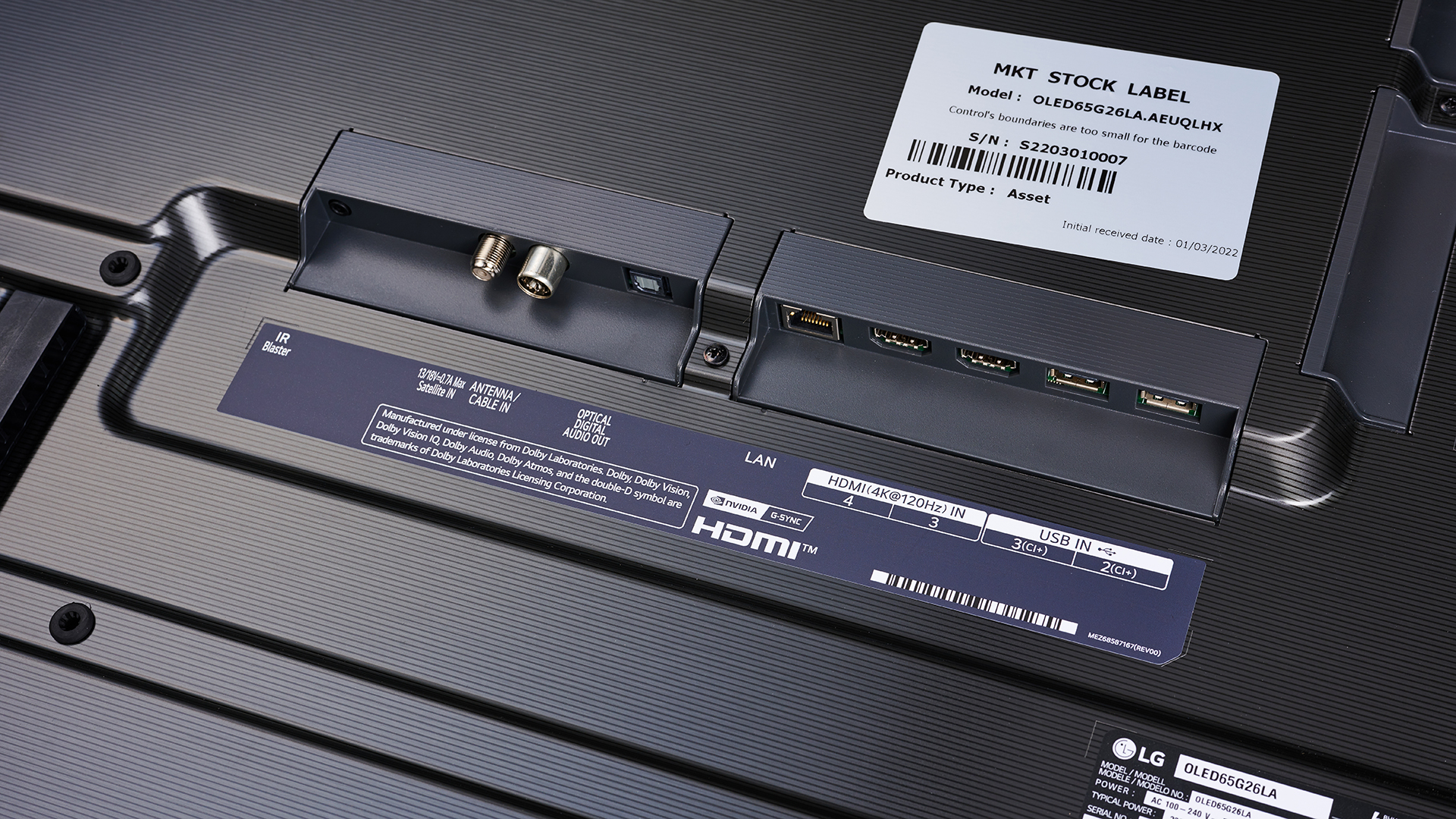
The OLED65G2 is easily LG’s best OLED TV yet. Its sound is a solid improvement over LG’s 2021 built-in audio, while the extra brightness it achieves thanks to its new heat sink and accompanying new processor delivers nothing but positives, enriching everything from basic HD SDR to sparkling 4K HDR and the finest graphical wares of the latest gaming consoles and PCs. All without anything looking forced or like ‘brightness for brightness sake’.
The extent of the improvements over the new C2 panel is more gentle than dramatic, perhaps raising questions for many about whether the OLED65G2 is worth £600 / $700 (around AU$1050) more than the OLED65C2. The cost issue is even more worthy of thought if you’re looking at spending even more to secure the OLED65G2’s optional stand.
While not truly extreme, though, the OLED65G2’s advantages are not only easy for anyone to see, but crucially lift pretty much every image frame to a higher level. So if you’re an enthusiast who just can’t rest unless you know you’re getting the best home cinema experience available, the OLED65G2 is going to be seriously hard to resist.
SCORES
- Picture 5
- Sound 4
- Features 5
MORE:
Read our review of the LG OLED65C2
Also consider the Philips 65OLED936
Best 65-inch TVs 2022: the best big-screen 4K TVs you can buy
Best OLED TV 2022: the best budget and premium OLED TVs
John Archer has written about TVs, projectors and other AV gear for, terrifyingly, nearly 30 years. Having started out with a brief but fun stint at Amiga Action magazine and then another brief, rather less fun stint working for Hansard in the Houses Of Parliament, he finally got into writing about AV kit properly at What Video and Home Cinema Choice magazines, eventually becoming Deputy Editor at the latter, before going freelance. As a freelancer John has covered AV technology for just about every tech magazine and website going, including Forbes, T3, TechRadar and Trusted Reviews. When not testing AV gear, John can usually be found gaming far more than is healthy for a middle-aged man, or at the gym trying and failing to make up for the amount of time he spends staring at screens.
